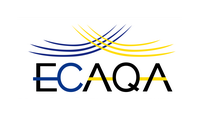
There has also been an observed decrement in the number of students from the UAE, Iraq, Jordan, Palestine and Qatar studying in the tertiary institutions in the US in 2016-17; and this has been said to decline further.
The number of Middle Eastern students pursuing higher education in the United States (U.S.) has declined by 8.4 percent, according to the latest data from the Institute of International Education (IIE). This is the first recorded decline in more than 10 years, according to the IIE, which has been collecting statistical data on international students in US campuses for close to a century.
While the social and political climate has adverse effect on the students’ decision to study in the US; weakening of oil prices is another critical factor that plays a significant role in the reduction of foreign education budgets in the Middle East region, particularly Saudi Arabia, which sends the fourth largest number of students to the U.S.
The number of students from the Middle East pursuing an education in the U.S. has been steadily increasing, following the launch of Saudi Arabia’s King Abdullah Scholarship Program (KASP) in 2005. However, in 2016, the Saudi government has decided to tighten the requirements and “scale back” the KASP scholarship program. The new KASP eligibility criteria is part of the Kingdom’s plan to reduce state spending and seek greater efficiency in many areas to limit a huge state budget deficit caused by low oil prices.
Saudi Arabia experienced the biggest year-over-year (YoY) decline within the Middle Eastern region in 2016-17 academic year, according to IIE. There were 52,611 Saudis studying in the US in 2016-17, a drop of 14.2 percent compared to the previous year. In addition, with Saudi Arabia devoting more resources into its domestic education system, particularly at the post-secondary level, may prompt more Saudis to study onshore.
There has also been an observed decrement in the number of students from the UAE, Iraq, Jordan, Palestine and Qatar studying in the tertiary institutions in the U.S. in 2016-17; and this has been said to decline further following the growth of online education, improved higher education opportunities onshore, increased competition among anglophone countries and an aggravated anti-Muslim bias under U.S. President Donald Trump.
The number of overall international students to the U.S. may have rose by 3 percent to 1.08 million, but the number of new undergraduate enrollments slide for the first time in 12 years. Therefore, tertiary institutions in the U.S. will have to amend their international strategic recruitment plans, taking into account the new social, economic and political controversies.
Source: The National








